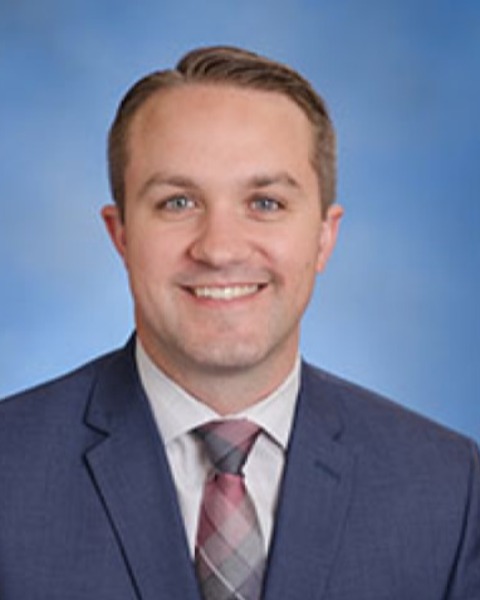Breast
7: Routine Use of Cavity Shave Margins with Breast Conserving Surgery Lowers Re-Excision Rates in a High Volume, Large Group Practice

Jeffery Chakedis, MD, FACS
Surgical Oncologist
The Permanente Medical Group
Lafayette, California, United States
Jeffery Chakedis, MD, FACS
Surgical Oncologist
The Permanente Medical Group
Lafayette, California, United States
Jeffery Chakedis, MD, FACS
Surgical Oncologist
The Permanente Medical Group
Lafayette, California, United States- AT
Annie Tang, MD
Breast Surgical Oncology Fellow
University of California San Francisco, United States - GK
Gillian Kuehner, MD
General Surgeon
The Permanente Medical Group, United States - AS
Alison Savitz, MD
General Surgeon
The Permanente Medical Group, United States - MJ
Maris Jones, MD
Surgical Oncologist
The Permanente Medical Group, United States - LS
Lakhbir Sandhu, MD
Surgical Oncologist
The Permanente Medical Group, United States - MY
Mindy Young-Reeves, MD
General Surgeon
The Permanente Medical Group, United States - MK
Maihgan Kavanagh, MD
Surgical Oncologist
The Permanente Medical Group, United States - SC
Sharon Chang, MD
Surgical Oncologist
The Permanente Medical Group, United States
Abstract Presenter(s)
Submitter(s)
Author(s)
Routine use of cavity shave margins (CSM) after breast conserving surgery (BCS) for breast cancer was found in two randomized controlled trials to halve the rate of margin re-excision. In a high-volume, large group-practice of 55 breast surgeons who treat 2,000 annually with BCS, routine CSM practice was instituted. We conducted a prospective interventional study to evaulate the effects of routine CSM utilization on rates of margin re-excision.
Methods:
All adult female patients with a diagnosis of Stage 0-III breast cancer who underwent BCS were evaluated from September 1, 2018 through March 30, 2023. Routine CSM was defined as at least four re-excised surfaces of the lumpectomy cavity. Three time periods were studied: Pre-intervention (Sept 2018 – June 2021), Transition (July 2021 – Jan 2022), and Post-intervention (Feb 2022 – March 2023). Margin re-excision rates were compared using chi-square test.
Results:
The trial enrolled 10,069 patients who had a median age of 64 (IQR 56-72), majority of cancers occurred in women of white race (56%) and were mostly invasive ductal (75.1%) and early stage (T1 55.2% and T2 26.0%). During the study period routine cavity shave margin utilization increased by 170% (Overall 32.4%, Pre 20.7% to Post 56.9%, p< 0.001), Figure 1 Margin re-excision rates decreased by 28.1% (pre-18.3% to post-13.2%, p< 0.001) after CSM intervention. BCS in which CSM were used had a significantly lower re-excision rate throughout the study (CSM: pre 14.3% and post 11.4%, no CSM: pre 19.4% and post 15.5%, < 0.001). CSM utilization improved rates of re-excision for invasive breast cancer (pre- 12.8%, post 8.9%, p< 0.001) but did not effect ductal carcinoma in-situ (pre-27.6%, post-24.1%, p=0.36). Mastectomy rates did not change throughout the study (pre-30.8% to post-32.2%, p=0.11). CSM were adopted by 26 surgeons (47%), CSM was not used or used selectively by 20 surgeons (36%), and 9 surgeons (16%) routinely used CSM throughout the study. Surgeons who adopted CSM increased ultilization from 8% pre-intervention to 73% of BCS operations post-intervention. Almost all CSM adopters (24/26 surgeons) had a decrease in re-excision rate and overall rates decreased by 36.8% (pre-21.3% to post-13.5%,p< 0.001)
Conclusions:
In a large group, high volume practice, cavity shave margins were adopted by half of surgeons in a two-year period and was succeful in signifcantly reducing re-excision rates by 37%. This real-world experience corroborates clinical trial data that cavity shave margins are a practical and effective pratice to lower re-excision rates
Learning Objectives:
- Identify methods for reducing re-excision rates for patients undergoing breast conserving surgery
- Identify patients who are high risk for margin re-excision and may warrant additional methods for risk reduction
- Describe the cavity shave margin technique and be able to incorporate it into their practice
